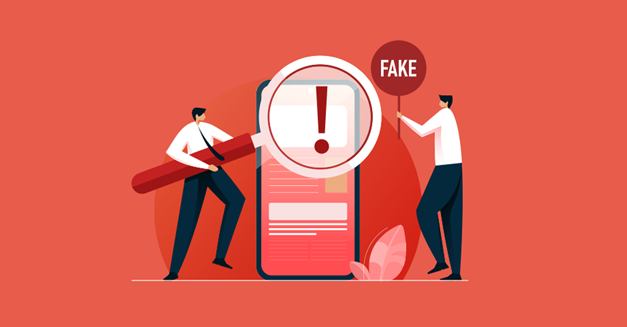Happy Customer Service : 7 Ways to Improve Customer Satisfaction
In the past, providing the customer with exactly what they needed was the dominant force for a business. Creating the right solution for implementing happy customer service was all about identifying a pain point. A business could grow on that alone.
As long as the end result was what they wanted, people would tolerate subpar experiences. It was less important to know how to keep your customers happy because no one else was selling that product or service.
Technology has made it easier than ever to keep customer’s happy in the last 20 years. Markets have grown increasingly saturated as technology has improved. Many businesses did the same thing.
The popularity of online retail shopping has exploded. The growth of online grocers put a strain on brick-and-mortar stores. Hundreds of companies began delivering meal kits to your home.
Just having the right solution or even the right solution with the right interface was not enough. Companies that succeeded in this new environment were the ones that kept customers satisfied.
According to Forrester, 81% of customers prefer businesses that exceed their expectations. A company’s success depends on its customers. Consider it. Providing excellent or happy customer service seems obvious, but why aren’t more companies investing in it?
There is more to customer service than a department. The culture of the entire company is meant by this term. You will ultimately achieve happy customer satisfaction if you get your team and customers on board.
For businesses to consistently invest in their products or services over time, customer happiness is more important than brand loyalty, repeat business, and more revenue.
Maintaining happy customer service isn’t easy. But an all-in-one platform such as Xoopah can do all this and so much more; a simple management solution that makes managing leads, payments & reputation so easy.
5 Reasons for Making Your Customer Happy

The Nielsen Company conducted a Global Online Consumer Survey of over 25,000 Internet consumers from 50 countries. According to the survey,
92% of consumers trust recommendations from people they know. The only way to get people to refer to your business is to provide remarkable service. The cost of providing happy customer service is nothing. But the result it produces is why businesses should be more focused on it than anything. Among many things, here are our 5 top reasons to make your customers happy:
-
Customer happiness is directly linked to customer loyalty. When customers are happy with your product or service, they’re more likely to continue doing business with you.
-
Happy customers are also more likely to refer others to your business. This word-of-mouth marketing can be invaluable in helping you attract new customers.
-
Customer satisfaction is often used as a metric for measuring business success. Therefore, making your customers happy can help you demonstrate your business’ success to investors and other stakeholders.
-
Happy customers tend to be more forgiving if there’s ever an issue with your product or service. If they know you’re committed to making them happy, they’ll be more likely to give you the benefit of the doubt if something goes wrong.
-
Finally, happy customers just make working in customer service more enjoyable! When you love your job and are proud of the company you work for, it shows in your attitude and interactions with customers. Making your customers happy is key to making yourself happy at work.
For any business, collecting good reviews should be one of the top marketing strategies. Xoopah’s review management platform provides the most effective and streamlined way to manage your brand’s online reputation.
Tips to Boost Your Happy Customer Service

-
Connect your customer strategy with your identity
Your customer strategy should be an extension of your overall identity – who you are as a company. It’s not something that should be bolted on as an afterthought. Your customer strategy should be seamlessly integrated into everything you do, from how you answer the phone to the design of your website.
It should be reflected in your branding, mission statement, and core values. When done right, your customer strategy will be the thread that ties everything together and gives your company a clear sense of purpose. So ask yourself: what does your company stand for? What kind of experience do you want your customers to have? And most importantly, what kind of relationship do you want to build with them?
Once you have the answers to these questions, you can start crafting a customer strategy that aligns with your identity.
Taking this holistic approach ensures that your customer strategy reinforces rather than detracts from your company’s identity.
-
Set happy customer service goals
You can define goals as a series of more granular actions that support your company’s big picture. Customer happiness is the main goal, but it can be achieved by breaking it down into smaller, more tangible ones.
Your company’s leadership should communicate its vision for customer happiness to the rest of the team by setting goals. Make sure your goals are SMART: specific, measurable, achievable, relevant, and within a specific timeframe.
How does your team approach this? By improving your customer service program, you begin with a vision. Then you work with your team to create smaller, specific goals that are challenging but achievable, relevant to the larger goal of generating happy customers, and measurable within a specific period of time.
Having a specific goal in mind gives you a foundation for implementing the actions that will help your team achieve the specific goals tied to the bigger picture of customer satisfaction and retention.
It is important to give your employees concrete ways of achieving these goals and implement periodic reviews so that you can assess their progress.
-
Identify customer touchpoints
A touchpoint is any point at which a customer has contact with a company during the customer lifecycle. In other words, it’s an opportunity for a company to make an impression on a customer.
There are all sorts of touchpoints, from the very first time a customer hears about your company to long after they’ve made a purchase. And each one presents an opportunity to build or strengthen customer and brand relationships.
Think about all the different ways a customer might interact with your company, from seeing an ad to receiving a product to talking to customer service. Each of those is a touchpoint. And each one offers an opportunity to create a positive experience that will keep customer/s happy.
Of course, not every touchpoint will be positive. But by carefully managing touchpoints, companies can ensure that more experiences are positive than negative. Ultimately, that’s what it takes to build a strong relationship with customers.
All touchpoints need to be integrated for a streamlined solution to be implemented. You’ll ensure your customers receive great service by providing an omnichannel solution.
In this situation, a happy customer service CRM can be helpful since it allows your representatives to handle customer inquiries via phone, chat, or social media from one place rather than moving between channels.
The centralization of customer touch points ensures all customer information is in one place, allowing your team to provide the most effective service to your customers.
-
Centralize Your Customer Data
Good customer support relies heavily on customer data. Still, the data isn’t useful if kept in silos, particularly if your team has to search multiple spreadsheets, dashboards, or files to find the necessary information.
The only way to get answers to questions is to collect and analyze customer data.
This data can come from various sources, including online surveys, social media, customer service interactions, and purchase history.
It is therefore essential to centralize data. An e-commerce help desk or customer dashboard can do this by aggregating all of a customer’s touchpoints, such as emails, phone calls, and social media messages.
This will ensure that your customer service team can always refer to any historical information about a customer’s experience or purchase.
When everyone has access to the same data, they can make better-informed decisions about marketing, product development, and customer service.
-
Provide a consistent experience across all channels
A consistent experience is one that customers can rely on regardless of how they interact with a company. This means that the same level of service, quality, and support should be provided no matter the channel used.
In the era of omnichannel marketing, this is more important than ever. Customers expect to be able to move seamlessly between channels without having to start over from scratch each time.
As a result, companies must focus on delivering a consistent experience across all channels. This can be challenging, but it’s essential to ensure customer satisfaction and retention. By delivering a consistent experience, companies can create an environment where customers feel valued and appreciated.
Monitor social media reviews using an online reputation management tool such as Xoopah. The use of software platforms can ensure reviews don’t slip through the cracks and compromise the entire process. Our platform will alert you when a review goes live so that you can respond right away.
With an all-in-one platform, you can do it all at once. This system is easy to use for small and medium-sized businesses to review customers, interact online, and build a reputation online.
-
Ask your customers for feedback at every touchpoint
Regarding customer feedback, there’s no such thing as too much information. Most businesses understand the importance of gathering feedback from customers, but many only focus on traditional touchpoints like surveys and interviews.
While these methods can be helpful, they only provide a limited view of the customer experience. To fully understand how customers feel about your business, it’s important to ask for feedback across all touchpoints.
This means asking for feedback after a purchase has been made, during the decision-making process, and even during casual interactions. By taking a proactive approach to feedback, businesses can identify potential problems early on and make necessary adjustments.
Additionally, this allows businesses to show customers that their feedback is valued and that their satisfaction is a top priority. By gathering feedback from as many sources as possible, you can get a clear picture of what’s working well and where there’s room for improvement.
With this information, you can make the necessary changes to deliver an outstanding customer experience.
-
Maintain a high level of happy customer service
Whether you’re dealing with internal or external clients, it’s important to be able to handle customer inquiries and concerns professionally and courteously.
In many cases, the first point of contact with a customer will be over the phone, so it’s important to take the time to brush up on your phone etiquette.
This means speaking clearly and slowly, listening carefully to the customer’s issues, and taking the time to find a resolution. In-person customer service means maintaining a positive attitude, being patient, and always lending a helping hand.
Following these simple suggestions, you may guarantee that your customer service is up to par.
How to Determine if Customers are Satisfied
According to Search Engine Land, about 85% of customers read over ten reviews online before making a purchase. Do you think you’re doing everything right to keep your customers happy? What are your chances of knowing for sure? A happy customer shows a few tell-tale signs.
-
It has a low churn rate.
The churn rate of your customers indicates how loyal they are. If you lower your price or offer free shipping, will your customers keep returning, or will they ditch you for a competitor? Churn rates vary by industry and target audience, but you want them as low as possible.
-
A strong social media following.
Often, social media is given a bad rap. Vanity metrics are notoriously difficult to connect to revenue and are labeled ‘vanity metrics.’
-
In one area, however, they are useful: customer satisfaction. Positive interactions and high engagement indicate a happy audience for you and your product.
-
Getting referrals.
A business’s lifeblood is referrals, especially in the professional services and B2B industries. You can get large accounts, upsells, and cross-sells from them. In addition, they can bring you thousands of individual customers. It is one of the easiest ways for your business to grow if you have loyal customers who recommend your product or service to others.
-
Positive reviews
. Reviews are almost as trustworthy as referrals from friends and family in the digital age. A negative review can destroy a business, while a positive review can propel it forward. Make sure unhappy customers are compensated for their bad experiences. Don’t forget to take care of your happy customers. Thank-you gifts and rewards programs can make a big difference.
Without these four signs, you may need to focus on customer satisfaction and retention. Don’t forget the overarching principle: Make them feel special. Happy customer service is built upon that!
Building a strong digital presence can increase your company’s growth by connecting with a larger audience. By improving engagement with your target audience, establishing credibility, enhancing revenue, and elevating your website’s search rankings, Xoopah is here to help.






